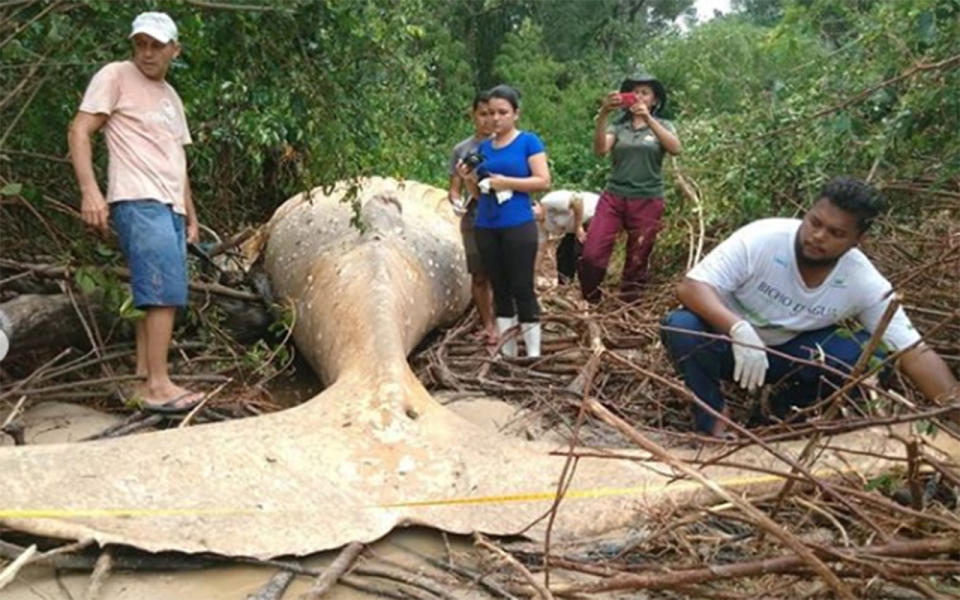Experts baffled after giant humpback whale found in Amazon jungle
Experts are baffled as to how an 11-metre long humpback whale ended up dead in the Amazon jungle.
When a flock of vultures were spotted flying above the decomposing mammal on Friday, a group of biologists raced to the scene at the island of Marajo in Brazil’s north, where the rainforest meats the ocean.
Authorities from the NGO Bicho D’agua said they were stumped as to how the whale, believed to be a 12-month-old calf, ended up so far from its natural habitat in the winter season.
Remarkable images captured by the marine conservationist group show the dead whale splayed out on the forest floor in the middle of a swampy mangrove, some 15 metres from the ocean.


With no definitive answer as to how it ended up there, the biologists took some samples from the whale before it deteriorated too severely in the hope it may provide some clarification.
The project’s president Renata Emin speculated that the creature may have been floating close to the shore when abnormally high tides, that have plagued the area in recent weeks, picked it up and threw it inland.
“Along with this astonishing feat, we are baffled as to what a humpback whale is doing on the north coast of Brazil during February because this is a very unusual occurrence,” he told local media.
He said given humpback whales usually don’t travel to the north, it’s likely it became separated from its pod during the during the migratory cycle.
The Maritime Herald suggested the animal may have been killed by swallowing marine plastics, before the body washed up on shore.
A post shared by Bicho D'água (@bicho_dagua) on Feb 23, 2019 at 6:23pm PST

Do you know more or have a story tip? Email: y7newsroom@yahoo7.com.au.
You can also follow us on Facebook and Twitter and stay up to date with the latest news with Yahoo7’s daily newsletter. Sign up here.


